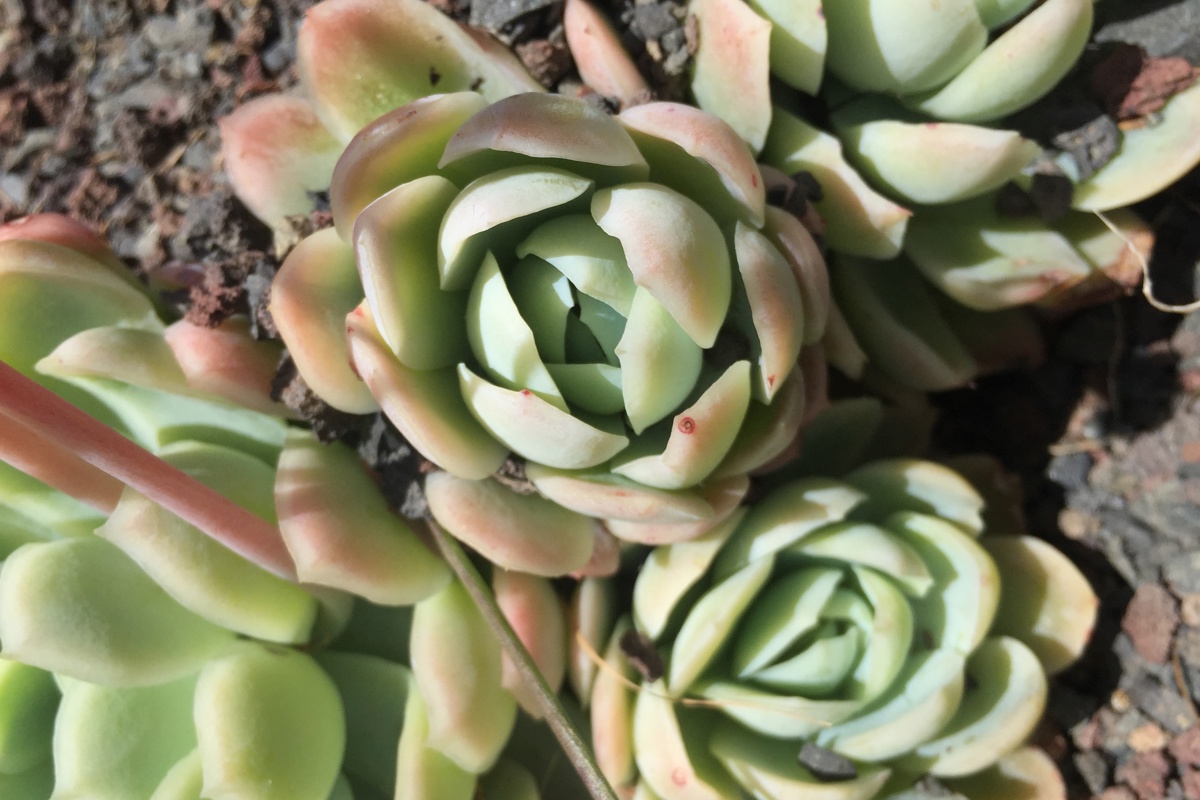Physical characteristics
Clump-forming succulent comprised of
Flowers and foliage
Grey rosettes of fleshy leaves produce
Preferred site
Prefers
Preparation for planting
Always choose healthy, well-grown
Maintenance tips
Water moderately in growth periods (winter) and sparingly when dormant (summer). The plant needs water when its lower leaves become soft or wrinkled. Plump leaves are a sign that all is well with the roots. Avoid getting the soil too
Echeverias are easy to propagate. Most rosettes around large
Pests and diseases
Mealybugs, aphids and vine weevils can be a problem if grown inside.
Location at Auckland Botanic Gardens
Rock Garden




.jpg?width=1200&height=1200&v=1d4024dceb89e50)

.jpg?width=1200&height=1200&v=1d5569224d63650)
 .jpg?width=1200&height=1200&v=1d4024df6ce2770)
.jpg?width=1200&height=1200&v=1d55676a892f2b0)
 .jpg?width=1200&height=1200&v=1d4024e3b65f7f0)